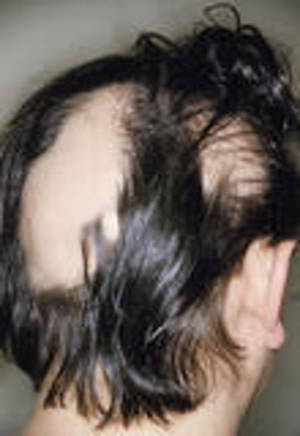There are many things our hair can tell about us. For instance anyone can tell if you are having a bad hair day, or if you have curls or smooth hair. Or even if you have any fashion sense about hair and hair styles. And what about DNA, we’ve all seen the who done it movies where one strand of hair caught the perpetrator because of the DNA carried in that strand. But does hair have any relationship to our health? Does bad hair necessarily mean bad health? Let’s explore some myths and facts about our hair.
Now everyone is familiar with dandruff, either you have had or someone you know has it. Is it dangerous or telling us something about our health? No. There is a theory that dandruff is caused by an overgrowth of a fungus. Or it can be caused by a simple dryness or oiliness of the scalp. Maybe you are shampooing too often or not often enough. Also if you have eczema or psoriasis you surely could have it in your scalp. No matter what the reason for dandruff, it is not contagious and it is not harmful. Embarrassing yes, bothersome yes. But not dangerous.
Try using anti-dandruff shampoos daily, leaving the lather on your scalp for 5 minutes then rinse well. Also avoid very hot water as this can irritate the scalp, lukewarm is best.
Myth: Shampooing every day can cause seborrheic dermatitis.
Now there is a dandruff that can be more indicative of a problem. If you notice the dandruff is yellow or greasy, it may be seborrheic dermatitis. This is an inflammatory skin condition, occurring where there are a lot of oil glands usually on the scalp and face. This condition is related to hormones, fungus or even neurological problems. You should see your doctor for possible treatment with anti-fungal medication and steroids. But also use the anti dandruff shampoos as discussed above, for some relief.
Fact: Suddenly losing a lot of hair actually could be pointing to a health problem
Help! I’m going bald! No you probably are not. We actually lose a lot more hair than you may realize on a daily basis. It is estimated that we lose up to 100 or more hairs daily. We each have about 100,000 hair follicles and it is estimated that about 90% of them are growing at any given time. The other 10% are resting. This is called the telogen phase. These rested hairs will fall out about every 2-3 months. It is of course, replaced by new hair and the cycle just continues on. So hair loss on a regular basis is perfectly normal and healthy. It helps keep your hair shiny and strong.
Fact: Shedding as many as 100 hairs a day is normal.
As reported by the American Osteopathic College of Dermatology, Telogen effluvium is when some stress causes hair roots to be pushed prematurely into the resting state. This results in a sudden increase of hair loss usually described by patients as their hair coming out by the handfuls.
This usually occurs after the body has undergone some kind of shock to the system such as fever, childbirth, severe infections, chronic illness, severe stress, surgery, over or under active thyroid, crash diets, poor nutrition including inadequate quantities of protein and some medications. As much as 70% of your hair can be lost in large numbers at a time usually within 2 months after the “shock” occurred. New hair starts growing right away. And the condition may not need further treatment, but see your doctor for evaluation. It can be quite frightening.
Fact: Round bald spots could be a sign of alopecia areata, an autoimmune disease.
There is also a condition that is very difficult for people to deal with psychologically, especially woman. It is called alopecia areata. This is an autoimmune condition that causes your immune system to attack your hair follicles. This causes your hair to fall out, often in large clumps leaving you to deal with bald patches. Some cases will have all body hair fall out. This conditions is not dangerous and hair might grow back with treatment. Unfortunately, some people do not respond to treatment. And the condition may repeat over and over.
There is another type of alopecia that is caused by what we do to our hair. It is known as traction alopecia and it is caused by pulling the hair too tight, for example ponytails, braids, and cornrows can damage to the hair roots and cause hair to break or fall out. Hair extensions and hairpieces can sometimes cause traction alopecia, too, because their extra weight pulls on existing hair. One solution is to frequently change your hairstyle. Give it a rest from the tight traction. Hair will usually grow back if traction is released. But if it is allowed to continue for long periods of time it can lead to permanent hair loss and balding patterns.
Myth: Brushing your hair 100 strokes a day keeps it healthy.
So as you can see there is a lot that our hair can tell about us. And although it can suggest there is some tweaking to our systems that may be needed, it is generally not dangerous or harmful. Usually it is a slap to our egos and our fashion styles, but good care of our hair, good nutrition and general good hygiene practices can make a huge difference.
In Part two of this article we will discuss male and female balding and some more myths and facts about what our hair is telling us.
Sources:
Yellow Dandruff
Alopecia Areata
Seborrheic Dermatitis
Telogen Effuvium Hair Loss




